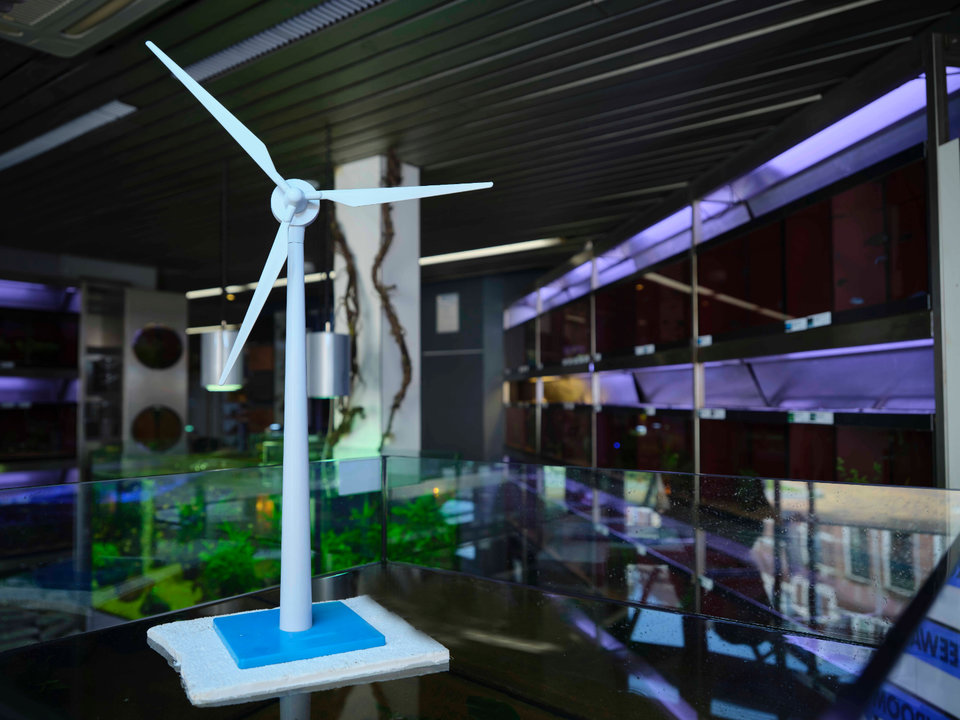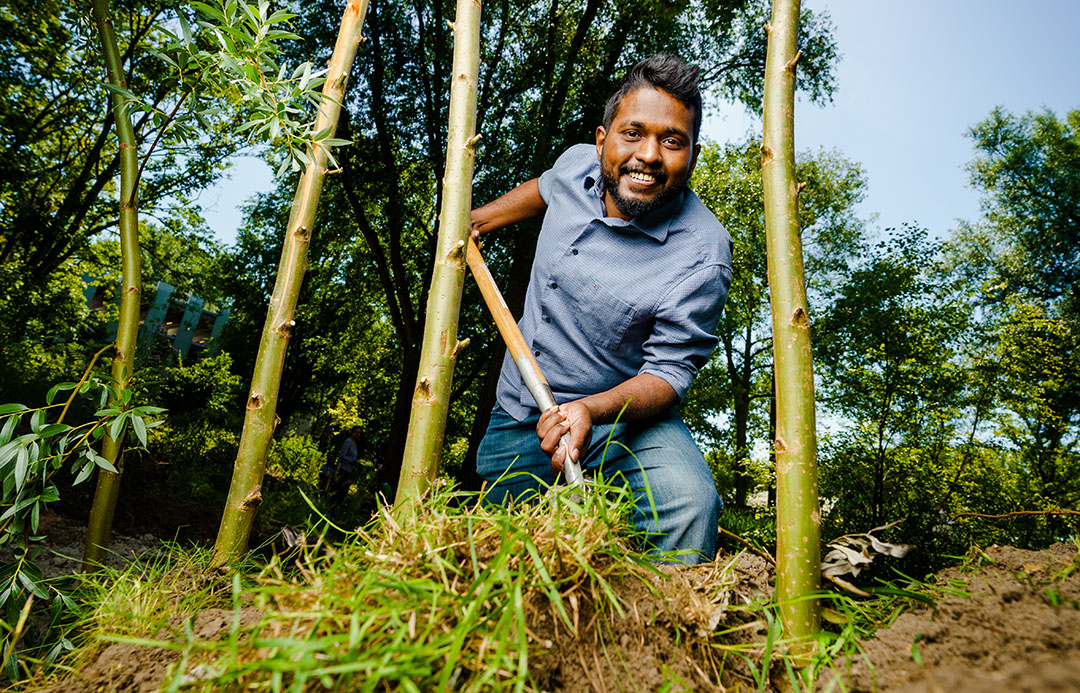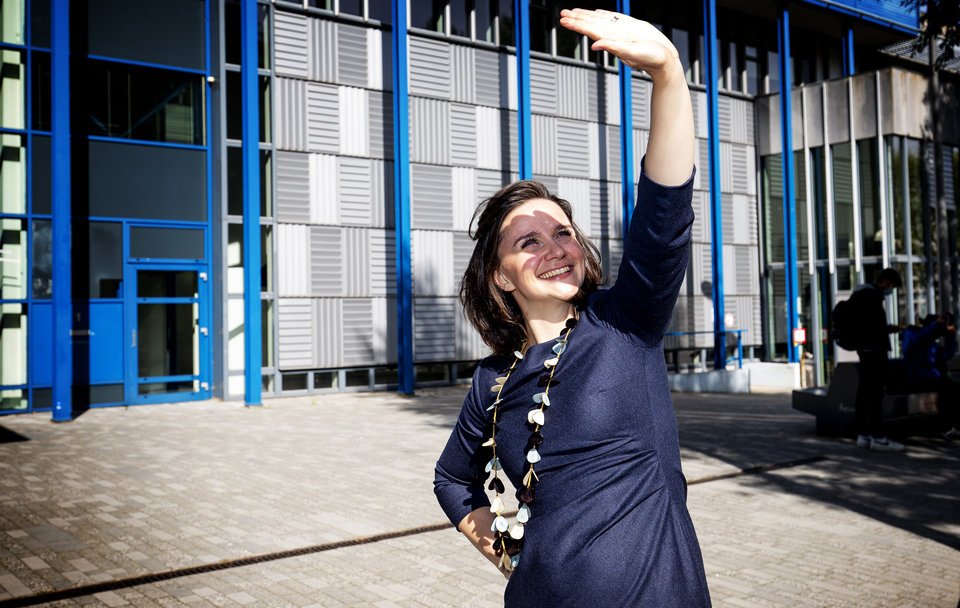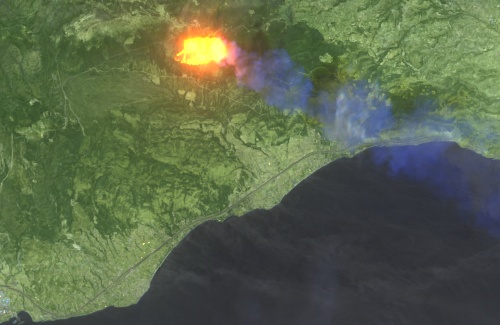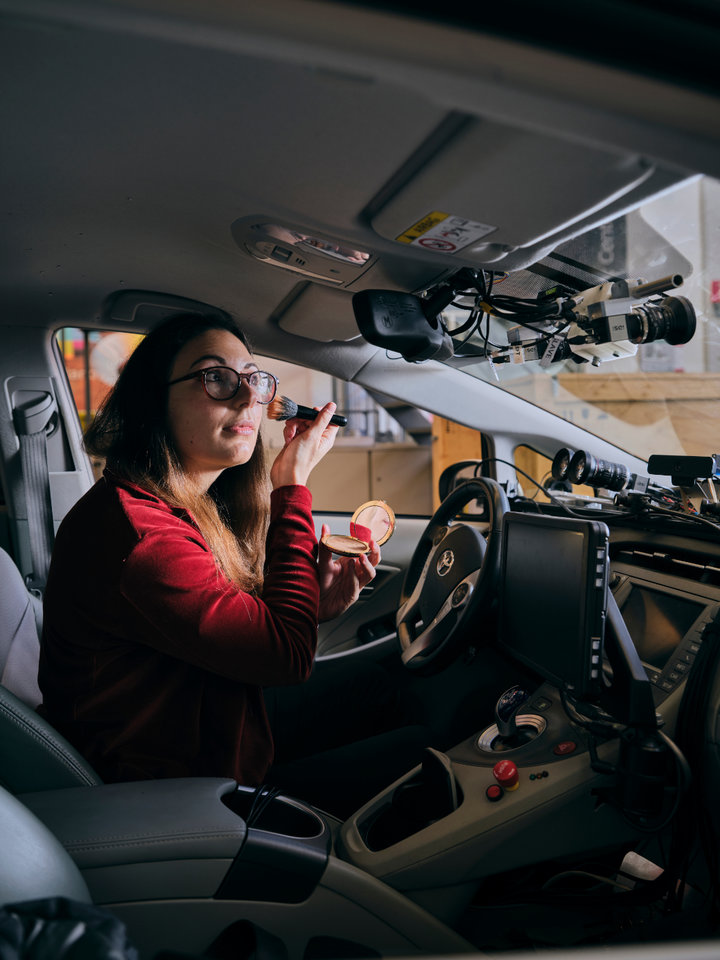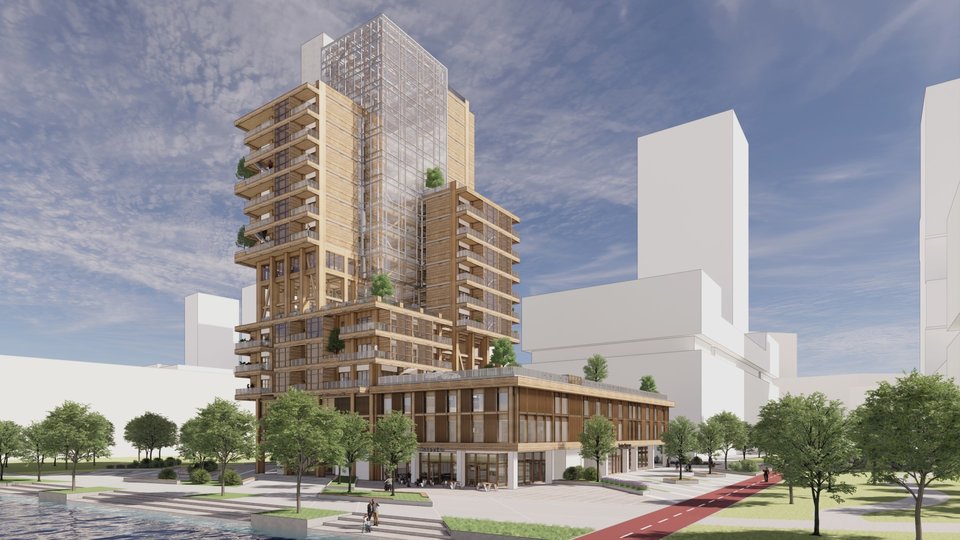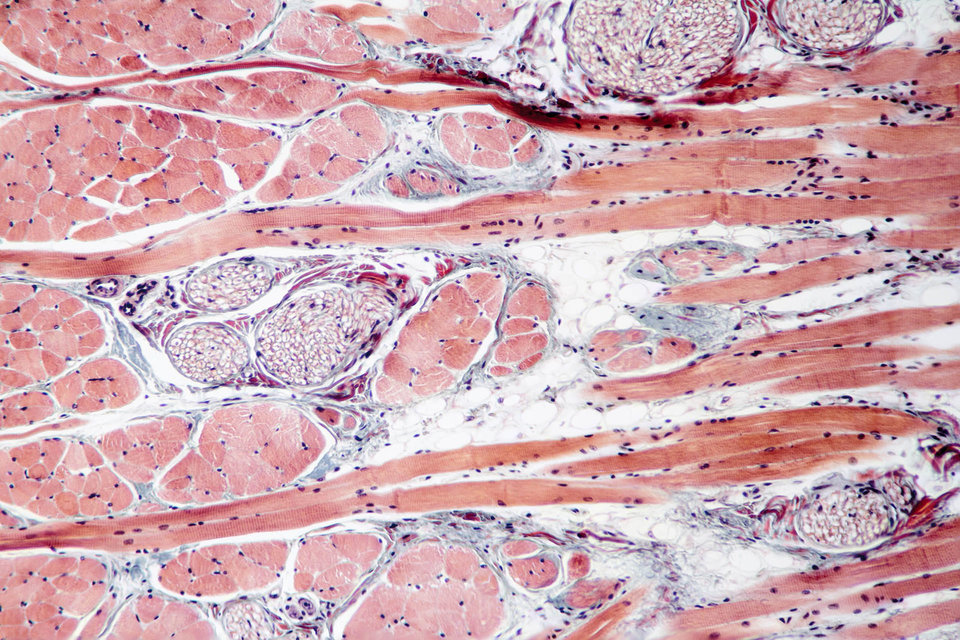‘Urban Ecology can have a positive influence in many other areas in addition to biodiversity, such as climate adaptation, health, water and energy consumption and circularity’, according to Nico Tillie, who, together with 26 students, looked at how the forces of nature could be given more room on TU Delft Campus. The coronavirus wasn’t much of a help though.
Taking off
‘I grew up near a garden in Maastricht that was open to the public. So, I caught the urban ecology bug at quite an early age. I eventually found my way to TU Delft via Wageningen (Garden and Landscape Architecture) and London’s famous Kew Gardens’, says researcher Dr Nico Tillie from the Faculty of Architecture and the Built Environment.
‘Urban Ecology focuses on the interaction between organisms (including humans) and the non-living urban environment, such as buildings, water, the subsurface and so on. Interest in this first emerged in the post-war period, as all kinds of new opportunities for life arose amidst the rubble. But this specialisation really started to take off in the 1970s and 1980s, in the United States, Germany and elsewhere; in part under the influence of the Green movement.’
Urban ecologist
‘Unfortunately, the Netherlands is slightly behind other countries like Germany or the UK. Every city in the country now has its own urban ecologist, but there is no degree programme in Urban Ecology in the Netherlands, unlike other countries where such a programme is well established. That’s slightly bizarre, bearing in mind that we’re virtually the most urbanised country in the world.
‘So it’s great that BirdLife Netherlands (Vogelbescherming Nederland) has made it possible to set up a research fellowship that will enable the Faculty to give the speciality a nudge in the right direction. Recently Dutch universities and institutes, including TU Delft, have joined forces in a network for urban ecology and evolution.’
Biologists
Urban Ecology has traditionally been dominated by biologists, explains Tillie. This makes sense when you consider that the specialisation has its origins in the Green movement. ‘Over the last decade or so, it’s become increasingly clear that this field of research can benefit hugely from perspectives from other domains, such as landscape architecture and urbanism. People from those disciplines are more designers than biologists, which enables them to take a more practical approach to the ideas of Urban Ecology.’
‘Partly because of the major contribution made by biologists, the main focus used to be on biodiversity (which remains a crucial component). But Urban Ecology can have a positive influence in many other areas in addition to biodiversity, such as climate adaptation, health, water and energy consumption and circularity. Especially on a campus such as ours, Urban Ecology should be right at home.’
Our cities do not have to be biotopes for humans only, they could be a habitat for many different kind of organisms living together.
Urbanism student Anne Leltz
Campus Project
One of the important projects that Tillie and the team of lecturers from landscape architecture are working on is the ECOCampus Project, in which students are developing ideas and a vision for TU Delft campus (see also the three boxes about the students). ‘We launched this project in the first quarter of this year with 26 first-year Master’s students: 16 landscape architects, eight urbanists and two architects. Unfortunately, the coronavirus crisis has forced us to improvise this year and some of the practical implementation has fallen by the wayside. However, the students have made a video outlining their vision of the ECOCampus and were nonetheless able to realize some of their ideas on campus in cooperation with TU Delft landscape manager René Hoonhout and his team.
Anne Leltz, student Urbanism
‘Our built environment is expanding and often the design for developing areas are not nature inclusive. Biodiversity is decreasing in the Netherlands where I live, and we are dealing with natural problems such as droughts and peak rainfall. By designing with and for nature, the balance in our natural systems will be restored better and our built environment will be better protected for future climate conditions.
Also, our cities do not have to be biotopes for humans only, it could be a habitat for many different kind of organisms living together.’
‘What I really like about this course, is that we really get to experience to put our design into practice, we are having workshops to work with plants and we can work on site to make our design on campus.’
‘In 30 years, I hope the Campus will look like a resilient campus that uses natural systems to deal with climate conditions. Using the strengths of the diverse conditions we have on campus that are not always very much appreciated by humans can offer chances for organisms that do like to live in these conditions. This way weaknesses of our campus can be changed into strengths. For example, extreme winds at the EWI building could be reduced by creating a shelter of plants that are very much adapted too wind such as the hawthorn that also lives in the dunes. This way habitats are created for more kinds of species and the environment will be improved for humans as well: there is more green and the wind is reduced. These kinds of interventions will improve and restore the relation between human and nature on campus.’
Tillie is eager to stress that every design should start from a desire to understand and/or repair natural systems and that this is a key aspect of the project. He points out that this is often not the case. ‘We sometimes take a fun approach to this. For example, we asked the students to look at the campus from the perspective of an organism, such as a bee or a bird. This gives students an opportunity to dream a little. But we also feel it’s important for these dreams to meet reality. This is why we’re also working with the university’s Campus and Real Estate department.’
TU Delft Campus and Real Estate
‘There used to be a huge car park at the heart of the campus. This is where Mekelpark is, which may be of little real ecological value, but is useful for recreation purposes’, says Maria Hänsch, sustainability manager at the Campus and Real Estate department. ‘It’s given an enormous boost to the living campus. It would be nice if we could now create more ecological value here and in other places. Personally, in terms of feasibility, I see the Let it g(r)o(w) concept not as a wild woodland, but an enhancement of existing structures towards a sustainable urban environment.’
‘The current framework for the future of the campus is the Spatial Development Perspective (Ruimtelijk Ontwikkelperspectief). It outlines the building blocks for developing the campus area. The students’ work shows us their vision of nature in the city. As a university, we have the privilege of being able to take inspiration from our students and are happy to do so. It helps to view and understand the system from different perspectives. In order to improve practical feasibility, there will be a follow-up to the work done by students that will aim to link it with other domains.’
The Art of Letting it G(r)o(w)
From the six original groups in the project, a single vision was eventually chosen and developed for the campus. The vision has been dubbed “Letting G(r)o(w).” As the name suggests, the idea is to let the forces of nature take over the campus (or at least parts of it) and to shape these into a niche for various living species. While the basic functions of the campus will be respected, the strategy will be to reduce excessive paving and waste in order to enable vegetation to grow spontaneously. Built-up areas will become more ‘bio-receptive’ in order to increase the possibilities for different species. In some places, paving will be removed and reused to create eco structures. The project is cost-effective and can start immediately, because it requires little new material or specialised expertise. Three sites have been selected for the project: the paved section near the Bouwpub; the open area in front of the Jaffa cemetery around the Rietveld monument and the Mien Ruys park, close to Green Village.
Gary Gilson, student Landscape Architecture
‘As an architect and landscape architecture student, my responsibility lies not only in learning about designing and improving conditions for humans but also for other living beings’, says Gary Gilson. ‘In a rapidly urbanizing world dominated by man, with an increasingly varying climate, demographic, and urban structures, it is necessary to respect, protect, and promote these species and their living habitats as well.
The ecological chain and nutrient cycle are highly dependent on their presence and mobilization. Urban ecology promotes resilient and sustainable urban spaces where humans and nature coexist. When integrated in the right way, it can help in decreasing the air and water pollution while enabling new ways of food production, transportation, and housing for people as well.’
‘As this studio is a mix of students from Landscape Architecture, Urbanism, and Architecture, it creates a platform for cross-pollination of ideas and approaches along with a healthy environment to prepare one for the real profession where collaboration is the key to successful outcomes. In our vision the campus will change its identity from a fully calculated and predetermined design to a scenario where the spatial quality is decided by time and natural forces. The areas where the pavements have been removed will be taken up by different vegetative species in various stages of their lifespan. Some might be in their climax phase while some others might be just starting off their pioneer phase. The eco structures would be cathedrals in nature, used by students and staff as congregation spaces, along with niches for other species. The campus would develop into an ecologic stepping stone for the region.’
‘Letting grow’ does not mean allowing everything to become a kind of primitive woodland, although this would be ideal in some places. It is all about working with living nature, going with the flow rather than against it. It is important to try to adopt a bottom-up approach, designing as you go and using what’s already there. Spontaneous vegetation is often the most ecologically valuable, because it is primarily made up of local species that are a good match for the local animals and insects.
Yann Ninot, student Architecture
‘To me, Urban Ecology comes down to a question of interiority and how it relates to its exteriors. The ideal ecological urbanity would be one where all material and immaterial flows stay inside as much as possible and where all external negativities get minimized. Urban areas, even though quite negligible in terms of superficial impact on earth, are the main cause of the current climatic crisis: their very mode of sustaining requires the mobilization of more than one earth.
So urban ecology is especially important because it looks specifically at how we can reduce the reliance on such systems (with concepts such as circularity, urban agriculture, urban mining etc). And those question are, in a sense, architectural at core because they imply so many fields of expertise that have to be somehow merged into one coherent holistic system. So to me, it made a lot of sense to join this course in order to help me look at Urban Ecology from a different perspective - to see how architecture and landscaping could relate with each other.’
‘In 30 years, I see an ever flourishing campus, constantly evolving, constantly becoming. A campus where both nature and culture merge into a manifold of living fields. Fields of living beings, of living processes, of living buildings. In that sense there really is no 'look' that I could think of but one where the lawn and the buildings become indistinguishable from each other, where they become one. More concretely, there would be less isolation of the buildings. There would be many and infinitely varied in-between spaces with a multiplicity of uses (for humans as much as for non-humans) until this very in-betweenness becomes the rule, thereby dissolving itself. This idea is very close to the one of micro urban clusters where the campus would function like a city. To go in that direction is to explore and explode boundaries, accept and dissolve differences.’
Valuable
The campus project is just one of many concrete projects that Tillie is working on. ‘There is a lot more in the pipeline, including collaborative projects with Leiden University and Naturalis. In September, we’re also launching an Urban Ecology & Ecocities graduation lab, in which we will be collaborating intensively with the City of Rotterdam accumulating to chairing and organising the Ecocities World Summit in June 2021 in Rotterdam ‘The hope is that these developments will help raise the profile of this specialisation. It’s important because our cities are really becoming too large, so urban nature is becoming increasingly valuable: the city as nature.’
The ON SITE Campus project team of TU Delft lecturers consists of: Nico Tillie, Saskia de Wit, Frits van Loon and Pierre Oskam, with preparatory work by Bieke Cattoor and Denise Piccinini. ON SITE is an elective course from Landscape Architecture.
This years’ students: Anne Leltz, David Aldana Trujillo, Dimitrios Trompoukis, Emmanouela Maria Armoutaki, Jan Houwelling, Liaw Su Xin, KaiLun Qi, Yu Zheng, Anouk Sanders, Jelle Dekker, Loen Sung, Francesca Mazza, Anne Mieke Boerendonk, Farnoosh Bazrafkan, Floris Beijer, Marloes Willemsen, Yayun Gao, Gary Gilson, Ran Yan, Xinyu He, Pu Jiang, Hanvit Lee, Yann Ninot, Ioanna Kokkona, Huiying Liu en Zhaotun Chen.
Photo's: Marco De Swart

